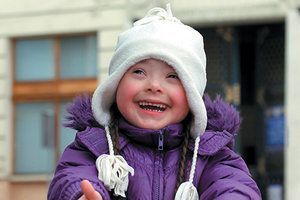In a landmark development, Blue Cross Blue Shield (BCBS) has reached a $2.8 billion settlement to resolve antitrust claims brought by health care providers, including chiropractors. The lawsuit accused BCBS of dividing the nation into exclusive regions and limiting competition, which resulted in lower reimbursements for providers. Although BCBS denies any wrongdoing, the company agreed to the settlement to avoid lengthy litigation – and you can get a piece of the pie.
Serving Special-Needs Children: Kentuckiana Children's Center
The mission of Kentuckiana Children's Center is to improve the lives of children by providing a foundation for healing through integrative chiropractic care. In preparation of this article, the KCC team of Rebekah A. Wittman, DC, DACCP; Jean Elizabeth Grabowski, executive director; Eric C. Epstein, MsT, DC, CCP; and Sharon A Vallone, DC, FICCP, assisted in answering my questions.
Since its inception, it's been said that Kentuckiana Children's Center was an "idea before its time" in treating special-needs children with chiropractic as a foundation for healing. What does that mean? In 1957, Dr. Lorraine M. Golden's "innate intelligence" guided her to promote collaborative care for children with special needs. She attracted individuals from many disciplines in the field of health care to work under one roof, with the united goal of helping children who were labeled with a pessimistic diagnosis and whose optimum potential was not being met.
Dr. Golden's premise was that with chiropractic as a foundation for healing, all the other treatments the children underwent (physical therapy, speech therapy, nutritional therapy, etc.) would have the potential of an improved outcome. Dr. Golden initially gathered these professionals under her leadership. She was succeeded by other chiropractors, like Drs. Joan Partridge, Sidney Gutting, Tracy Barnes, Natalie Leisman, Cheryl Ward and Rebekah Wittman.
Since special-needs children require a combination of treatment approaches, how does KCC apply allied therapies? In addition to the adjustment, we apply any or all of the following: CranioSacral therapy, pediatric massage, sensory-motor processing work (we have two sensory rooms) and stabilization with orthotic shoe inserts when necessary (Foot Levelers has donated orthotics for our kids for decades).

The effects of organized sensory input on cognitive function, immunity, and motor coordination are well-established in the published literature and in clinical observation. A diversity of sensory input seems to provide the best cortical stimulation. This is why it is so important to take an integrative approach with our special-needs children.
How does your team stay on top of current research trends? Our doctors, staff and board members attend various workshops and seminars that cover the many disorders seen in our kids, [as well as] yearly continuing-education covering topics that serve our population. Our doctors write, submit and publish articles in chiropractic peer-review journals on topics found in our client population. We are currently working on developing research projects for publication.
It can take a village for a nonprofit serving this pediatric population group. Who makes up your "chiropractic village"? Most of the clinic chiropractors have additional training through pediatric diplomate courses and have a network of colleagues they can "call in" to help think-tank around complicated cases. Previous doctors and friends of KCC are also available, especially those who predominantly see special-needs children or who have seen these children in their offices. This includes Drs. Sharon Vallone, Tracy Barnes, Carol Phillips, Eric Epstein, Heather Iannelli, Laura Hanson, Laura Nunno, Lora Tanis, Dan Murphy and many other ICA diplomates. Each has offered support through educational opportunities, as well as one-on-one guidance for case management of especially challenging and difficult cases.
In addition to chiropractors, we have developed a network – locally and nationally – of pediatricians, occupational therapists and social workers to help with case management.
Do families see improvement they weren't seeing before in their children after working in this multidisciplinary environment? We often see improvements the parents were not expecting, such as improved speech, decreased seizures, or simply that their child is just easier to be with. Most often we see improved bowel movements, better sleep, fewer tantrums, less seizures, more calm behavior, and faster attainment of goals set in other therapies such as occupational, physical or speech therapy.
Some children are on a progressive decline, and what we find is they experience a better quality of health with chiropractic care. As with every child, there are some children [with whom] we do not realize any measurable improvements, other than the child seems to "feel" better after coming in for care.
What if one of our colleagues has a child in their office with special needs and doesn't feel they have the experience to treat this child; can they contact KCC or refer them to the center for an assessment? Yes, we want to work with as many chiropractors and physicians who need our help. We can offer to have the child and their family come to KCC for an evaluation, report of findings, and subsequently a treatment plan for a one-time visit, or a three-day or week-long intensive.
KCC has a licensed clinical social worker who can make arrangements for the family to stay at the Ronald McDonald house if needed during their visit. Then that child can return to their local chiropractor to complete the treatment plan. We can offer a variety of scenarios for doctors if the child cannot physically come to KCC, such as phone consults, help ordering and reviewing labs, diet, supplements, etc.
We also try to refer children to appropriate chiropractors if they are out of our area. We have some children who come from 2-3 hours away once every few months to receive chiropractic, cranial, sensory, or nutrition care, with a local chiropractor caring for them in between.
Can you take me through the intake, health history, lab tests and treatment of one of your children? The intake process at KCC typically starts with an inquiry from either a parent or a referral from a physician, therapist, or friend. On the initial phone call with a parent, we talk about the services offered at KCC, the child's demographics, the child's diagnosis (whether a formal or working diagnosis), and the main reason the child was referred or wanting to be seen. Then, depending on the nature of the child's condition, a new-patient packet is sent out for the parents to complete.
Once the packet is completed and returned to KCC, then a new-patient exam is scheduled. This process can sometime take a week, a month, or even sometimes a year depending on the parent's ability to return the packet. The packet is an in-depth history as to the nature of the child and includes history from preconception to current. This process can be sped up if the child's condition is acute or if general wellness care is sought, as in a typical chiropractic setting.
The new-patient exam is typically set for an hour. The history is reviewed including the goals and challenges the parents would like to see addressed. The physical examination is a complete physical and often includes checking for retained primitive reflexes, sensory needs, and cranial assessment.
Most children are not treated on their first visit due to the complexity of the diagnosis, history and examination. A written and oral report of findings / narrative is scheduled for a different day so the doctor can review and research if necessary while coming up with a detailed treatment plan. This treatment plan always includes chiropractic and may also include cranial work, movement or sensory work, lab tests, supplements, dietary changes, orthotics, etc.
How do you evaluate measurable goals and outcomes? Measurable goals often come directly from the parent when they tell about the current struggles of the child or what they would like to see improved. This might include increased bowel movements, improved sleep, more calm behavior, better focus, better demeanor, less seizures, etc. The goals can be subjective or objective as with range of motion, flexibility, bowel movements, speech, etc.
There are also some measurement tools such as the ATEC (Autism Treatment Evaluation Checklist) that can place a score or we can use a version of the Visual Analog Scale and try to put a number on where the child is with subjective complaints like "happiness."
Every child is placed on a treatment plan; the plan might be 1-2 times a week for 4-8 weeks. Then a re-evaluation is completed in which we review and assess progress, whether all components of the treatment plan were completed, such as lab work or supplement use, or the ability to comply with treatment frequency and so on. Based on these updates, a new treatment plan is then created.
As a nonprofit, how do you find your funding and how is it spent? Our funding comes from a variety of sources. Individual private-sector donations make up 3.7%; insurance collections make up 7% of revenue generated.
We write grants, conduct fund-raisers, have an end of year annual mailing, and several informational support mailings throughout the year to generate revenue to operate the Center. Some donors designate their donation for a specific reason such as equipment, windows, or other Center operations. Every dollar donated from the private sector goes to chiropractic services for the children.
Over the years, we have seen a decline due to the current economy and other nonprofits vying for what funds are available. But our KCC team continues to work hard to garner grants, corporate and academic donors and individual contributions that make up the core of our support.
Why is supporting organizations such as Kentuckiana Children's Center so vital to the chiropractic profession in general? Our kids are here because they have challenges that limit their ability to succeed in the world. We know that chiropractic and allied modalities are helpful for so much more than just pain, but we can't get reimbursed from third-party payers for the services we render.
If our profession wants to evolve into the future as providers who have the capacity to do more than treat pain, it is necessary that we treat children, especially special-needs children. By doing this, we show to the profession, and to the world, that we are not pain doctors; we are modulators of the nervous system and all the functions it performs.
We depend on support from the profession to continue Dr. Golden's vision and to help chiropractic progress into the future as much more than a treatment for pain.
If a doctor or student would like to make a donation or start an annual fund-raiser, how do they contact you? If you would like to make a donation or for more information, please call 502-893-7227or mail to Kentuckiana Children's Center, 1810 Brownsboro Road, Louisville, KY, 40206. Please mention Dynamic Chiropractic in your correspondence.



